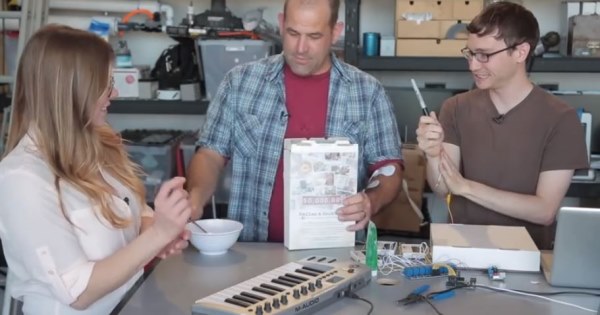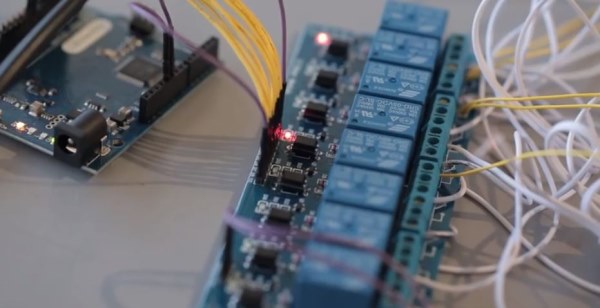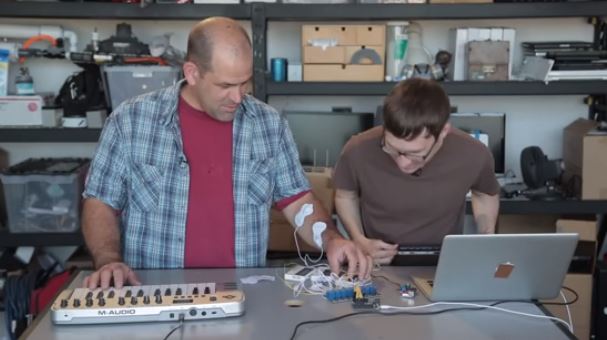So you’re tech-savvy and want a fun DIY project? A YouTube series called DIY Tryin’ offers weekly hands-on adventures for those engineering-adept individuals. The YouTube channel’s founders and stars, Patrick Norton and Michael Hand, aim to help viewers develop the skills to build, not buy, their projects.
In this feature, the pair teaches us how to hack someone’s nerves and create muscle twitches that look like your muscles are dancing.
 Preparing to make their muscles dance. (Image via DIY Tryin', YouTube)
Preparing to make their muscles dance. (Image via DIY Tryin', YouTube)
Watch the creation in the video below and if you’re feeling daring, try it yourself.
Norton and Hand created a shocking device using transcutaneous electrical nerve stimulation (TENS) which sends voltage through the skin.
If you’re tackling this project, you don’t want to pump enough electricity into yourself or someone else to cause the reaction you’d get from a Taser gun, but just enough to make your muscles dance a bit.
The team used an Arduino relay board controller setup. (If you want to make one, view DIY Tryin’s instructional video here.)
 Arduino relay board controller setup used. (Image via DIY Tryin', YouTube)
Arduino relay board controller setup used. (Image via DIY Tryin', YouTube)
They interrupted the lines in the setup so that when it’s hooked up to the relay board and the switch is off, you don’t get shocked, but when the switch is on, you do get shocked because the connection is closed.
In the video, you’ll see that Hand actually hooked the Arduino to a piano so that the keys would control the shock factor. The piano aspect of the project involved a bit of software and involved the use of a Musical Instrument Digital Interface (MIDI) controller. The MIDI commands were then interpreted by software on Hand’s computer.
(He even set it up so that he’ll get shocked to the beats of “Mary Had a Little Lamb.”)
 The duo at work. (Image via DIY Tryin', YouTube)
The duo at work. (Image via DIY Tryin', YouTube)
In the video, Norton describes the steps of the process simply like this:
Key press, USB cable, MIDI interpretation, Signal to Arduino, Turns power on and off to a relay which basically will light up the nerve endings and cause muscles to contract
To get this thing working, you’ll need to use a highly conductive multipurpose electrolyte gel (for professional use) on your skin.
In the video, the duo tests the invention while trying to perform everyday tasks like writing and pouring cereal. Their friend Tara plays the keyboard and occasionally sends jolts of electricity to their skin, making them cringe.
Warning : Before attempting this DIY project, please be advised that if done incorrectly physical pain may occur.
Advertisement





